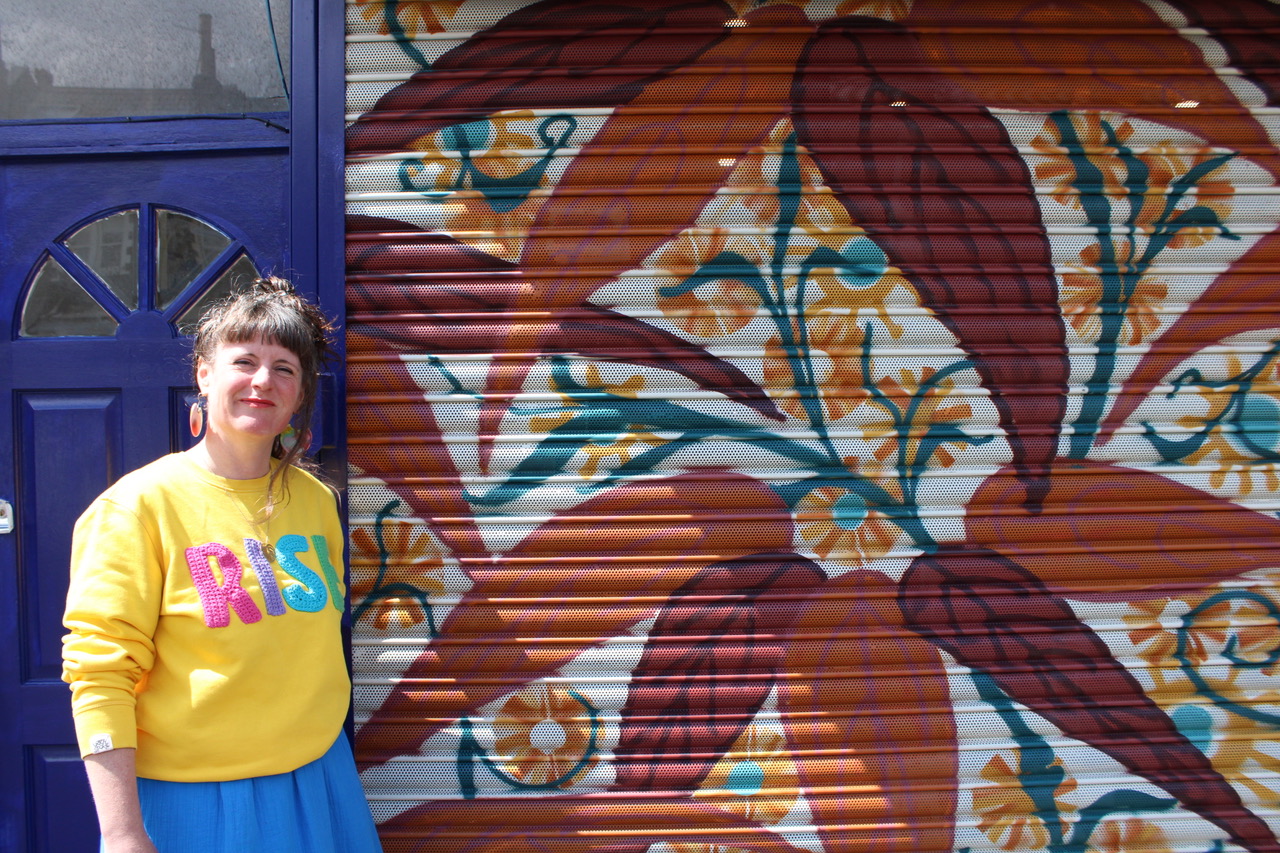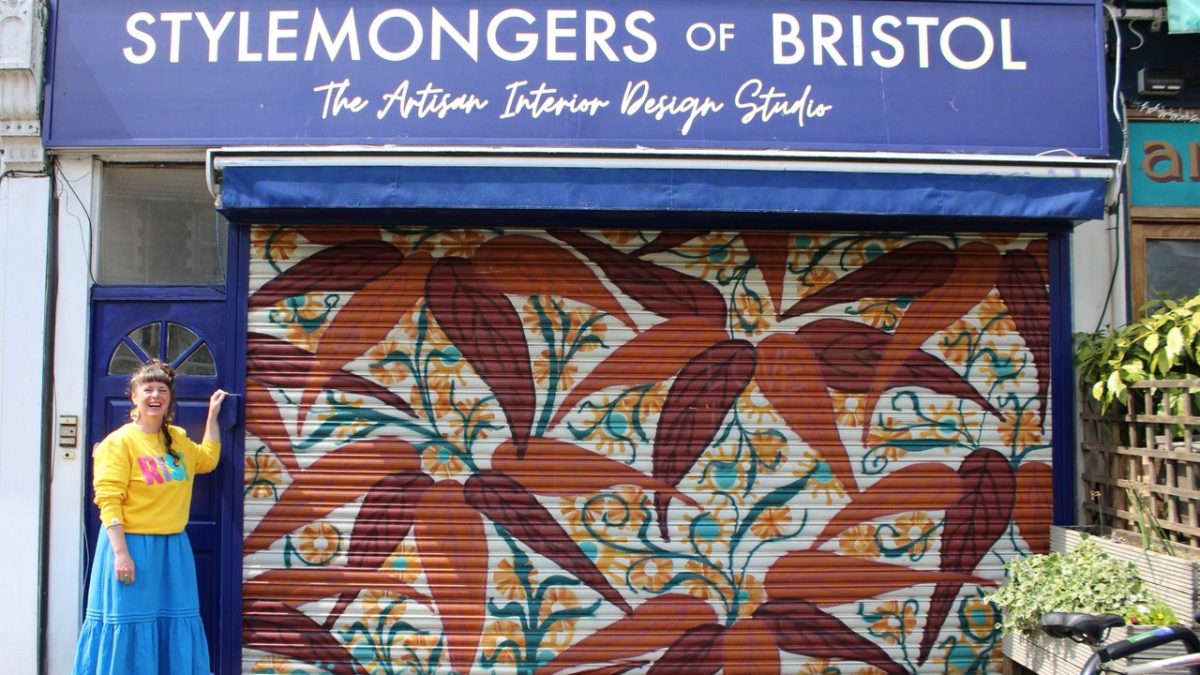News / Street Art
New mural pays homage to ‘William Morris of Bristol’
A freshly painted mural on the shutters of a craft shop has paid homage to the Bristol-born architect and designer E.W. Godwin, dubbed “Bristol’s answer to William Morris.”
The mural was painted by the award-winning designer and founder of Stylemongers of Bristol Zoë Hewett, who fulfilled her “teenage graffiti dream” by adorning the previously bare shutters.
Located at 196 Gloucester Road, the bright orange mural features a bamboo design, reflecting Godwin’s deep fascination with Japanese aesthetics.
Zoë said: “The shutter on my shop was bare, scruffy, and ripe for tagging, so I’ve been itching to give it some love and colour.
View this post on Instagram
“It had to be something relevant to interior design, of course, so I knew early on I wanted to try replicating the bamboo design by E.W. Godwin – Bristol’s own version of William Morris.”
Although spray painting techniques differ significantly from brush painting, Zoë was pleased with the result.
“I don’t have much spraying experience, as it’s a different technique from brush painting, but I’m pretty pleased with the result and hope passersby will find it enriching. It was fun to realise my teenage graffiti dreams – and I’m glad I can’t get busted for this one,” she added.
“It’s also an opportunity to draw attention to E.W. Godwin, because he’s an interesting part of Bristol’s design history. Yet the city doesn’t really celebrate him at all, even though he was clearly a polymath.”
The 19th-century architect and designer began his career as an engineering apprentice and was a contemporary of William Morris, leader of the Arts and Crafts movement.
Though Godwin died in debt, the forgotten genius left a lasting legacy in architecture with buildings such as the Carriageworks in Stokes Croft, Northampton Town Hall and Congleton Town Hall. He also designed Dromore Castle in County Limerick (1866–1873) and Glenbeigh Towers in County Kerry.
A self-taught designer, Godwin fused his passion for Gothic Revival with Japanese influences. Beyond architecture, he was also a prolific designer of furniture, textiles, wallpapers and metalwork.

Among the vast body of works of E.W Godwin, the Carriageworks in Stokes Croft takes a place of prominence – photo: Martin Booth
Born on Old Market Street in 1833, Godwin might have remained a footnote in local history if it were not for a recent interest and scholarship in him.
“I only ever heard of him thanks to a complete chance conversation about twelve years ago in the Stokes Croft China shop with the owner, Chris Chalkley, who very kindly loaned me his personal copy of one of the only books written about E.W. Godwin,” she explained.
“Sometimes I go into the reference library to flick back through their copy, but really I’d love to see his actual work in the flesh—an exhibition of whatever is in the archive would be awesome. For now, I get to enjoy my mural of his design every time I open up.”

Zoë Hewett, founder of Stylemongers of Bristol paid homage to the forgotten Bristol architect and designer E.W Godwin – photo: Stylemongers
She added that she felt a special affinity with Godwin as he too designed interiors and fabrics.
“He was the architect of the Carriage Works on Stokes Croft, and he also designed interiors, wallpaper, fabrics, even furniture—some of which are in the Victoria & Albert Museum in London. He later transitioned to designing theatre sets and costumes, which is what I used to do, hence my special interest in his work,” Zoë said.
Main photo: Stylemongers
Read next:
 Our newsletters emailed directly to you
Our newsletters emailed directly to you




















